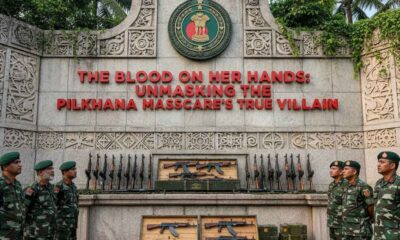Breaking
Israel and Hamas Execute Prisoner Swap: 200 Palestinians Released

In a significant development, the Israeli Prison Service confirmed on Saturday that 200 Palestinian prisoners have been released as part of a broader ceasefire and hostage release agreement brokered between Israel and Hamas. Release was described as being executed by a political outline designed to facilitate the return of Israeli hostages, with full coordination across security agencies.
Prisoners from Ofer Prison in the occupied West Bank were transferred to locations within the West Bank, while those detained at Ktzi’ot Prison in Negev were transported to Kerem Shalom crossing in the south. Red Cross coordinated the transfer, with paramedics present at the scene. Hamas had earlier stated that the agreement would involve the release of around 200 prisoners, including 120 serving life sentences and 80 ors with high sentences.
Hostage Release Staged by Hamas
Hamas’s handling of hostage release on Saturday showcased a highly orchestrated operation. A stage was set up in Palestine Square in Gaza City, guarded by hundreds of masked militants armed with automatic weapons. The militant group appeared intent on demonstrating its control in Gaza despite the toll of the 15-month conflict.
Four Israeli female soldiers—Daniella Gilboa, Liri Albag, Naama Levy, and Karina Ariev—were handed over by Hamas during the operation. In a striking display, women were dressed in makeshift army uniforms: green khaki-style jackets and pants, her hair neatly tied back. The release scene featured a large banner with the words “Zionism will not win,” accompanied by symbols from Israeli military and security agencies.
In stark contrast, three hostages released earlier had been dressed in civilian attire. Dramatic visuals, including footage of four women’s capture on October 7, 2023, were a grim reminder of conflict’s human cost. Videos showed women’s initial abductions, with some pulled from ir homes in pajamas, visibly injured and bound.
Human Toll of Conflict
ongoing Israel-Hamas war, which has persisted for over a year, has inflicted heavy casualties on both sides. Israeli military reports 841 soldiers killed, with 405 falling in Gaza. Meanwhile, Gaza’s health ministry has stated that over 47,000 Palestinians, predominantly women, and children, have lost their lives.
Reunion and Relief in Israel
released hostages were flown to Beilinson Hospital near Tel Aviv for medical evaluation and reunification with their families. A crowd gathered to greet freed women, expressing a mix of relief and joy. Nir Alboro, partner of Liri Albag, described his feelings as “good for the heart” and expressed hopes of celebrating her upcoming birthday together.
Israeli President Isaac Herzog issued a heartfelt statement welcoming freed hostages, saying, “An entire nation weeps and rejoices with you at this moment.” Prime Minister Benjamin Netanyahu and Defense Minister Israel Katz echoed their commitment to securing the release of all remaining hostages, both living and deceased.
Ongoing Challenges in Gaza
Despite the ceasefire agreement, tensions remain high in Gaza. Israeli military issued an urgent warning for civilians not to return to norrn regions of Gaza, citing ongoing security concerns. This directive remains in effect until Hamas fulfills its commitments under ceasefire terms, including the release of all hostages.
The situation remains fraught, with the fate of several hostages, including civilian Arbel Yehud, unresolved. Palestinian Islamic Jihad (PIJ) has claimed responsibility for Yehud’s captivity, asserting that she will be released as per prisoner exchange terms. However, Israeli officials insist she is a civilian and should have been freed already.
Global Implications
release of prisoners and hostages marks a pivotal moment in the Israel-Hamas conflict, reflecting the fragile balance of diplomacy and ongoing tensions. International observers continue to monitor the situation closely, underscoring the need for a sustainable resolution to humanitarian and political crises in the region.
As both sides navigate the complexities of the ceasefire agreement, the focus remains on ensuring the safety and dignity of those caught in the crossfire and on fostering a path toward long-term peace.










